Striped Maple
- October 18, 2023
- 0 comment
Striped Maple, scientifically known as Acer pensylvanicum, is a charming deciduous tree native to the northeastern regions of North America. What makes this tree stand out is its distinctively striped bark, featuring vertical white stripes on a greenish-gray background.

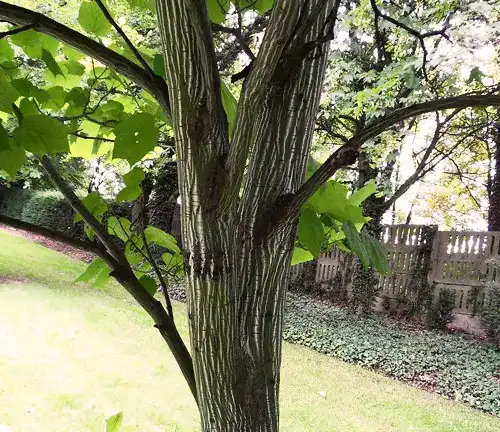
During the spring and summer, its leaves are toothed and shaped like a goose’s foot, turning a vibrant green, while in the fall, they transform into stunning shades of yellow and orange. Striped Maple typically reaches heights of 20 to 30 feet, making it a relatively small tree in comparison to its forest companions. It thrives in moist, cool woodlands and is often found alongside other hardwoods like beech and sugar maple.
Beyond its aesthetic appeal, this tree has cultural significance for indigenous people, who have used its wood for various purposes, from crafting baskets to making furniture. Striped Maple is a unique and delightful addition to the natural tapestry of North American forests.
| Characteristics | Description |
| Scientific Name | Acer pensylvanicum |
| Common Names | Striped Maple, Moosewood, Goosefoot Maple |
| Family | Sapindaceae |
| Type | Deciduous tree |
| Native Range | Northeastern North America |
| Mature Height | 20 to 30 feet |
| Bark | Distinctively striped, with vertical white stripes on a greenish-gray background |
| Leaves | Toothed, goose’s foot-shaped, green in spring and summer, turning yellow and orange in the fall |
| Habitat | Moist, cool woodlands, often found alongside other hardwoods like beech and sugar maple |
| Cultural Significance | Utilized by indigenous people for various purposes, including basketry and furniture crafting |
Botanical Beauty of Striped Maple
In the enchanting world of North American forests, Striped Maple, scientifically known as Acer pensylvanicum, stands as a botanical gem. Its appeal begins with the striking feature that lends it its name – the distinctive striped bark. As this deciduous tree graces the woodlands of the northeastern United States and parts of Canada, the vertical white stripes set against a greenish-gray background create a truly captivating sight. But there’s much more to this tree than its remarkable appearance. With leaves resembling a goose’s foot, Striped Maple offers an aesthetic experience that changes with the seasons. During spring and summer, its foliage dons a lush, vibrant green, only to transition into a fiery display of yellow and orange in the fall. This unique and visually pleasing tree has long captured the attention of nature enthusiasts, and its allure extends beyond its appearance to encompass ecological significance and practical applications.
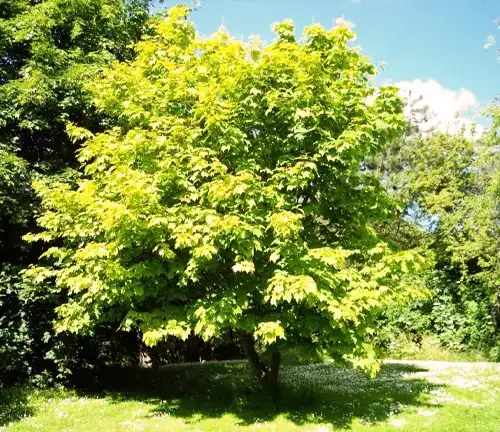
Woodland Elegance
Striped Maple’s elegance doesn’t stop at its exterior. Standing at heights of 20 to 30 feet, it might not be the tallest tree in the forest, but it certainly leaves an impression. Often found alongside other hardwoods like beech and sugar maple, it plays an essential role in shaping the character of the woodland landscape. Its relatively small size allows it to flourish under the canopy of larger trees, contributing to the diverse layers of the forest ecosystem. This interplay of size and form creates a harmonious woodland environment that beckons exploration and appreciation.
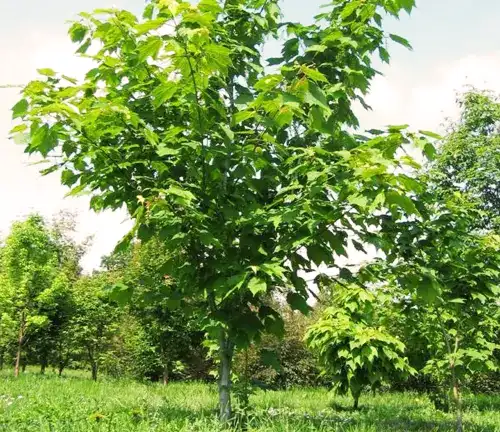
Ecological Importance
Beyond its aesthetic appeal, Striped Maple is ecologically valuable. As an understory tree, it provides vital habitat and food for various wildlife species. Its leaves and seeds offer nourishment to deer, rabbits, and numerous bird species. Its presence contributes to the rich tapestry of life within the forest, playing a role in the intricate web of ecological interactions.
Cultivation and Conservation
While Striped Maple thrives in its native woodlands, it can also be cultivated as a unique and captivating addition to gardens and landscapes. When considering its cultivation, it’s essential to ensure that it is placed in a location that mimics its native habitat – cool, moist woodlands. To ensure the preservation of this remarkable tree, conservation efforts are crucial. It is not considered endangered, but preserving its habitat is vital to maintain its role in the ecosystem.
Fragrance
Another delightful aspect of Striped Maple is its subtle yet pleasant fragrance. In the spring, the tree produces small, inconspicuous flowers that emit a delicate scent, attracting pollinators like bees and flies. This fragrance adds an extra layer of charm to its overall appeal, making it a sensory delight for those who take the time to explore its woodland home.
Soil Stabilization
The roots of Striped Maple have a unique feature – they are shallow but widespread. This attribute aids in stabilizing the forest floor, preventing soil erosion. In doing so, it plays a crucial role in maintaining the integrity of the forest ecosystem and contributes to the overall health of the woodland environment.
Common Uses
Indigenous people have recognized the utility of Striped Maple for centuries. Its wood is prized for its flexibility, making it ideal for crafting baskets. It has also been used for crafting furniture, revealing its versatility beyond its role in the natural world. The wood of this tree, with its fine grain and attractive color, has found applications in various woodworking projects.
Benefits
In summary, Striped Maple is a tree of multifaceted beauty and significance. From its striking striped bark to its ecological importance, from its subtle fragrance to its practical uses, this deciduous tree captures our senses and showcases the intricate connections within the natural world. Cultivating and conserving Striped Maple ensures that future generations can continue to appreciate the botanical marvel that graces our woodlands. As we explore the woods, we are invited to discover the subtle elegance and ecological importance of this remarkable tree, adding depth and nuance to our understanding of the forested landscapes it calls home.

Different Species
Acer saccharum
(Sugar Maple)
Sugar Maple is one of the most well-known maple species and is prized for its brilliant fall foliage. While it doesn’t have striped bark, it has smooth, grayish bark that becomes furrowed as the tree matures.

Acer platanoides
(Norway Maple)
Norway Maple is an introduced species in North America, known for its deeply lobed leaves and a range of bark colors from gray to dark brown.
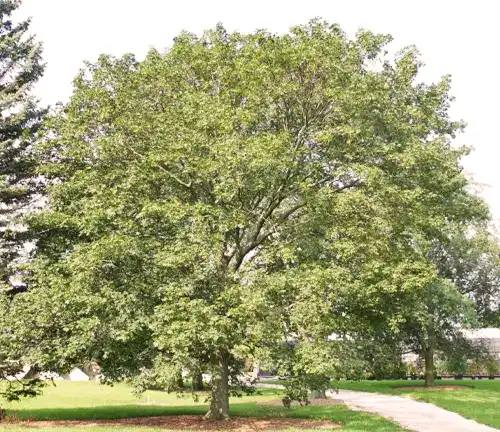
Acer rubrum
(Red Maple)
Red Maple is native to eastern North America and features red twigs and buds. Its bark is gray and smooth in young trees, becoming darker and rougher with age.
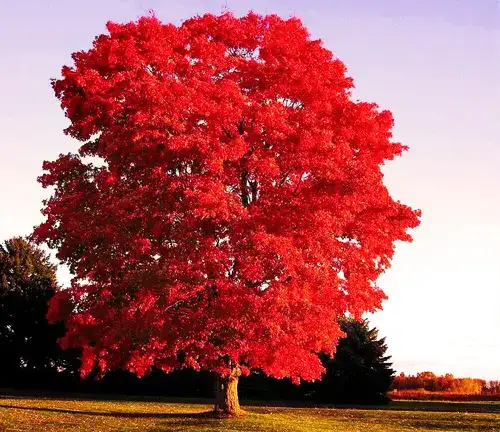
Acer palmatum
(Japanese Maple)
Japanese Maples are popular ornamental trees with various cultivars known for their unique leaf shapes, colors, and branching patterns. The bark of Japanese Maples can have subtle patterns but not stripes like the Striped Maple.
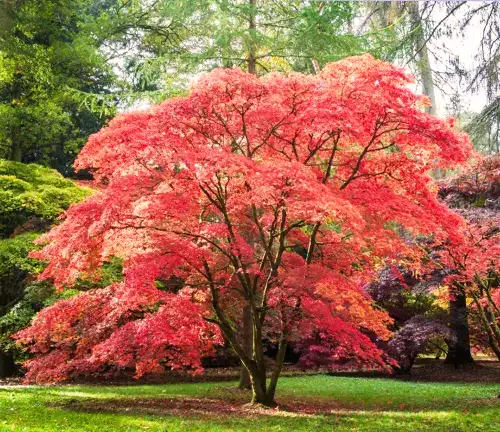
Acer griseum
(Paperbark Maple)
This species is known for its peeling, cinnamon-colored bark that resembles paper. It’s a smaller ornamental tree, prized for its bark texture.

Acer campestre
(Hedge Maple)
Hedge Maple is a small, tough species known for its compact growth and is often used for hedging. Its bark is gray but not striped.
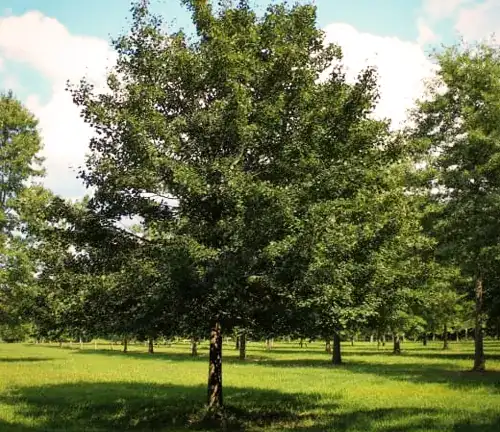
Frequently Asked Questions (FAQs)
- What is Striped Maple?
Striped Maple, scientifically known as Acer pensylvanicum, is a deciduous tree native to northeastern North America. It is named for its unique bark with white vertical stripes. - Where can I find Striped Maple?
Striped Maple is primarily found in the cool, moist woodlands of the northeastern United States and parts of Canada, especially in regions like the Appalachian Mountains. - What does Striped Maple look like?
Striped Maple is a relatively small tree, reaching heights of 20 to 30 feet. It has leaves shaped like a goose’s foot, green in the spring and summer, and turning yellow and orange in the fall. Its most distinctive feature is its striped bark with white vertical stripes on a greenish-gray background. - Is Striped Maple used in landscaping?
Yes, Striped Maple can be cultivated in gardens and landscapes, although it requires a habitat that mimics its native cool, moist woodlands. Its unique bark and attractive foliage make it an interesting addition to ornamental landscapes. - What is the ecological importance of Striped Maple?
Striped Maple serves as an understory tree, providing habitat and food for wildlife. Its leaves and seeds are a food source for deer, rabbits, and various bird species, contributing to the diversity of the forest ecosystem. - How can I conserve Striped Maple?
Conservation efforts for Striped Maple involve preserving its native woodland habitat, as it is not considered an endangered species. Protecting the forests where it thrives ensures its continued presence in the ecosystem. - Are there other maples with distinctive bark?
While Striped Maple is the most well-known for its striped bark, there are other maple species with unique bark patterns. For example, the Paperbark Maple (Acer griseum) has peeling, cinnamon-colored bark, and the Norway Maple (Acer platanoides) has distinct features, but they are not striped like the Striped Maple. - What are the common uses of Striped Maple?
Indigenous people have used Striped Maple wood for crafting baskets and furniture due to its flexibility and fine grain. It has cultural significance in traditional crafts. - Does Striped Maple have any fragrance?
Yes, Striped Maple produces small, inconspicuous flowers in the spring that emit a delicate fragrance, attracting pollinators like bees and flies. - Is Striped Maple a type of maple syrup tree?
Striped Maple is not typically used for making maple syrup. Sugar Maple (Acer saccharum) and Black Maple (Acer nigrum) are the primary species known for their sap, which is used to make maple syrup.


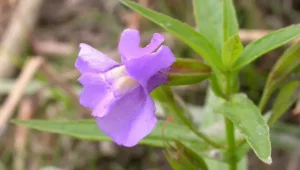

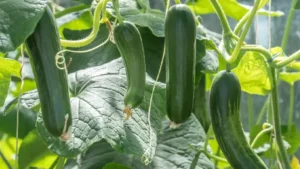
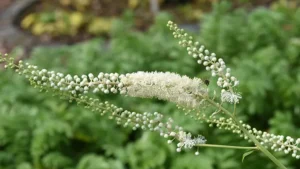
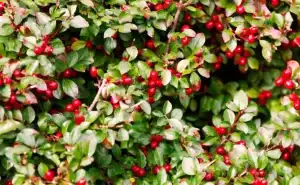
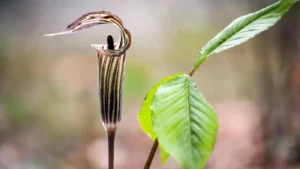
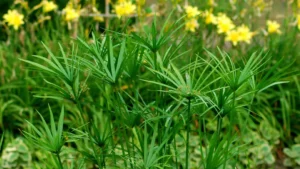

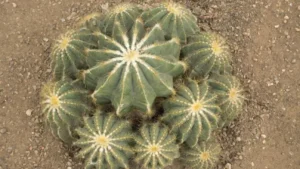

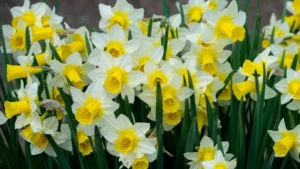
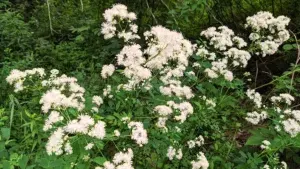
Leave your comment